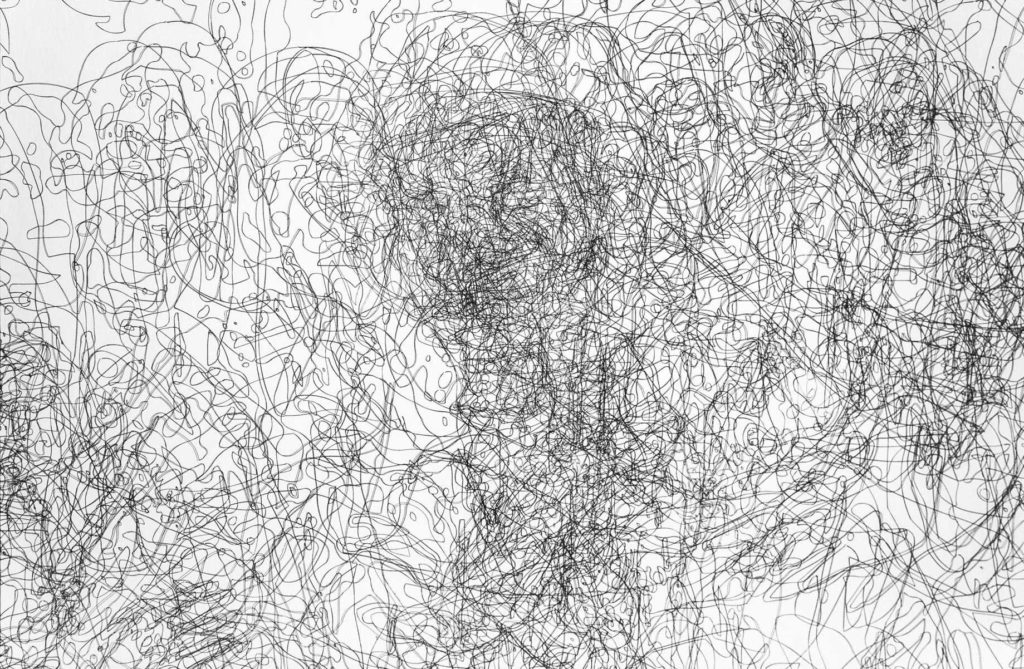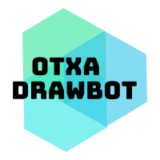THE PROJECT
In 2019 during a trip to Berlin I discovered the drawings of Achim Maaz. His vibrant and expressive works gave off a very particular energy that was both hard and raw at the same time.
Achim Maaz was very severely disabled. Unable to speak and having aggressive outbursts, he remained institutionalized all his life. During a creative workshop, drawing appeared to him as a way to finally express himself. Stealing from the nurses anything he could use to draw, he compulsively blackened the front and back of his sheets with a number of lines so dense that they pierced the paper. It was only after some time that his very special talent was detected, which enabled him to obtain real drawing materials and later to exhibit his works at the Berlin gallery Art Cru.
These drawings represented his daily life: his room, what he watched on TV, the caregivers, his meals etc… He could also be attached to small details such as cell keys, a cup of coffee or a gift received.
With a rare energy the drawings are never identical, they seize us with an unfiltered emotion. In my opinion, Achim Maaz is the perfect illustration of raw art as defined by Jean Dubuffet: “works executed by people without any artistic culture, in which mimicry, contrary to what happens with intellectuals, has little or no part, so that their authors draw everything (subjects, choice of materials used, means of transposition, rhythms, ways of writing, etc.) from their own background and not from the clichés of classical art or fashionable art. We witness the artistic operation all pure, raw, reinvented in all its phases by its author, from only his own impulses. “
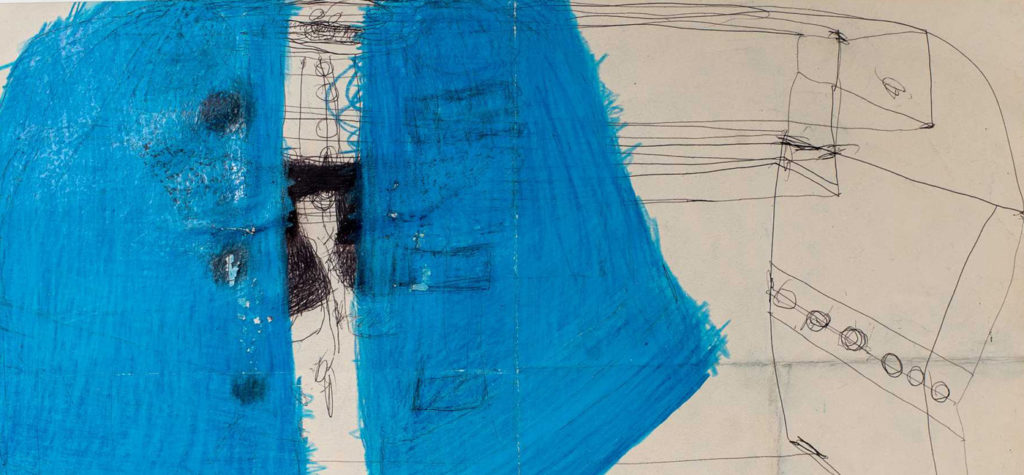
For many years I worked in the world of 3D computer graphics. The images produced in video games, cartoons, fractals or other generative formulas are often cold and in essence infinitely reproducible. In my opinion, if there is one thing missing from these images it is a soul. And precisely outsider artists like Achim Maaz have plenty of it. The idea of building a bridge between these two worlds has thus germinated little by little, and I undertook to bring them together around this project.
On a totally subjective basis I started by gathering outsider artists I like. Their only common point is to be categorized as such, some because they had disorders, others because they were not even aware they were making art, but all of them worked with their guts in an intense and spontaneous way. These artists are among others Achim Maaz, Dwight Mackintosh, James Castle or Caroline Demangel.
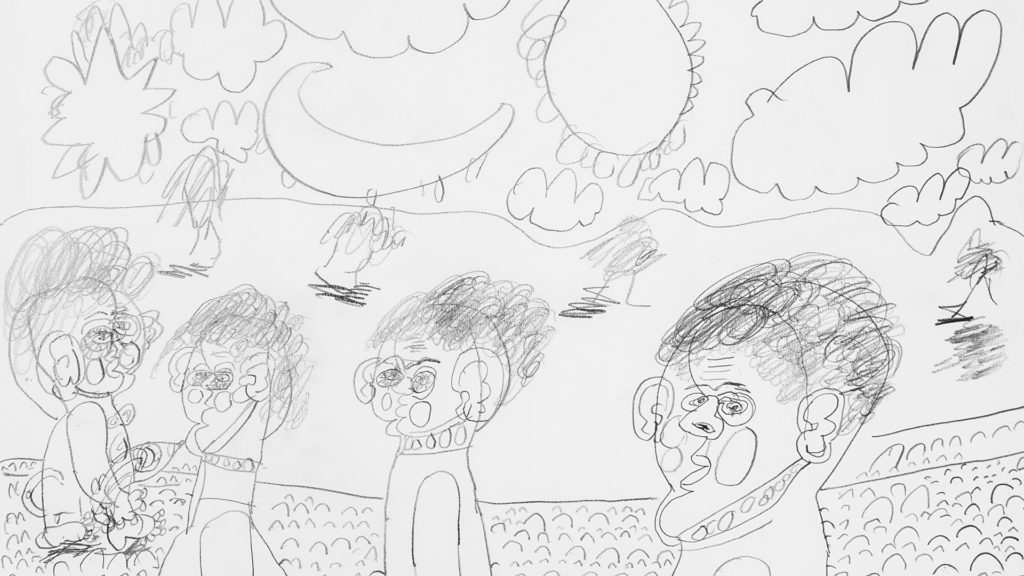
I then analyzed the characteristics of their works and came up with the following outline:
– The subjects and themes are mostly about everyday life, including recurring things like travel, meals, visits or the immediate environment.
– Their techniques:
- Most of the time the tools used are not noble and recovered from here and there, like simple pencils or ballpoint pens.
- Works are of very diverse sizes going from the small format to the A0 format. All types of supports even the less noble are used.
– Their style:
- Most of the time monochrome.
- The lines are often numerous, doubled, even tripled.
- Sometimes touches of color in large flat areas worked in an expressive and excessive way (damaged supports).
- A vision often in X-ray as if they saw through the objects.
- A style that can turn to abstraction in certain parts of the drawing.
Now that I know the constraints I will try to translate them into my environment.
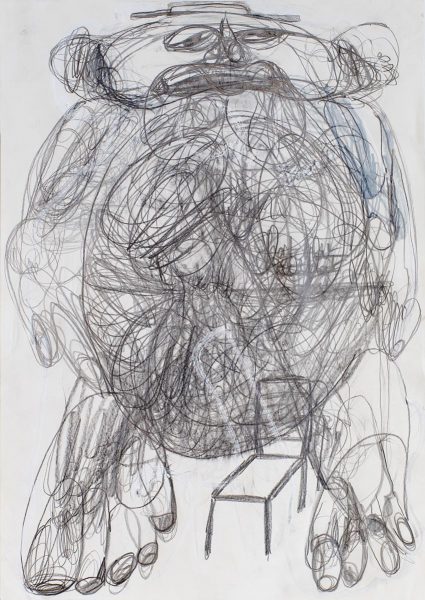
Subject
If there is one thing I do on a daily basis, it’s watching motion pictures. I’m talking here in a broad sense, that is to say that I don’t stop at simple cinema, I also include vernacular videos, promotional spots or even the tutorials that can be found on Youtube. Besides being a passion, films have already been the core of several previous works. Motion pictures are a reflection of the present and past. It is a good subject to explore and leaves the door open to many variations (medium, subject, genre etc.)
Technic
This is where the experiment takes shape since it is a machine that will take charge of the drawing and more specifically a pen plotter.
The principle of a printer using a pen rather than a print head is not new since it dates back to the end of the 50s. Many artists have quickly diverted these industrial machines to artistic purposes such as Vera Molnár. Since then, these machines have evolved little except that they have become open source and more versatile. Able to approach new techniques like painting, engraving or writing such as the watercolor bot or the Evil Mad scientist’s Axidraw.
Of course these machines have evolved but I notice that it is often the same types of drawings that are made with them (to simplify let’s say that it is very inspired by op art or minimal art). In my opinion there is much more to explore with these machines.
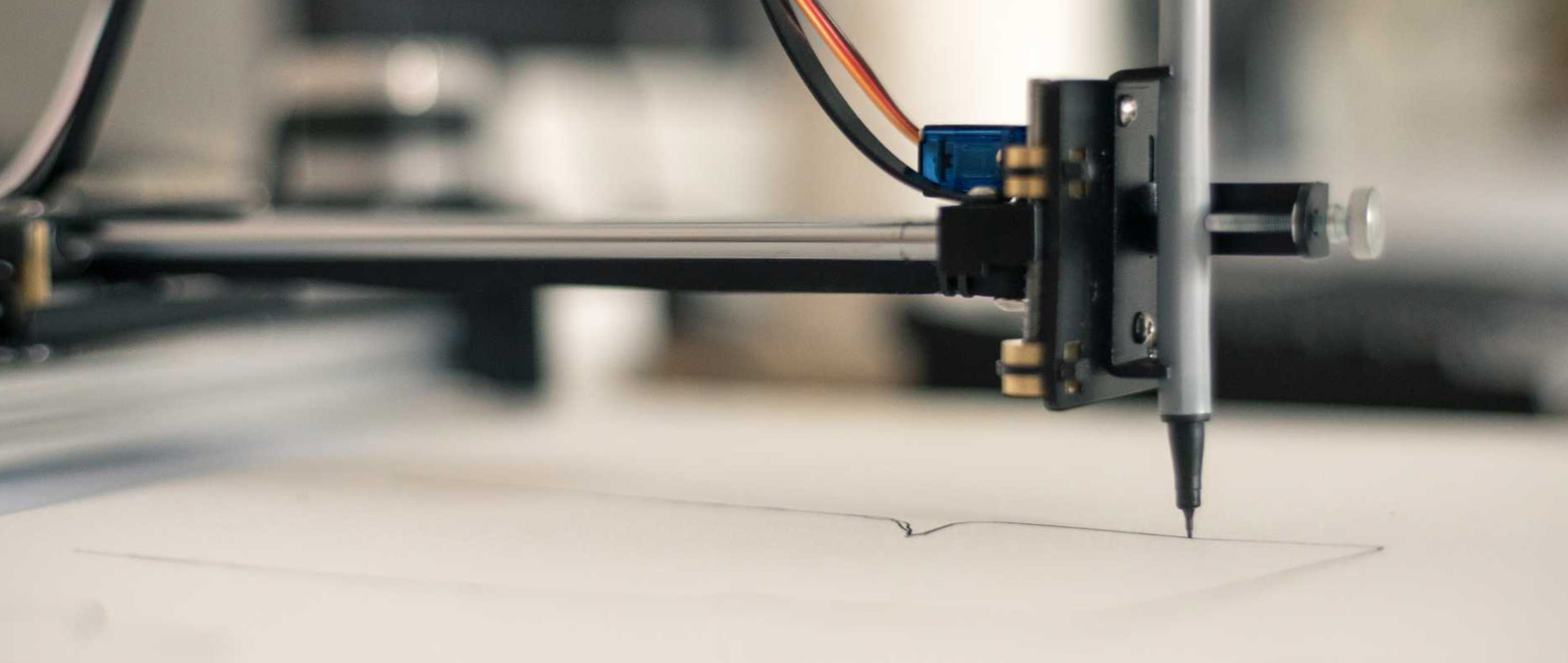
Style
Taking into account all the stylistic constraints I developed an algorithm able to extract some images from a movie and apply a series of operations to them. The algorithm will thus create hundreds of images for each proposed video. The images produced can be abstract, recognizable, not to my liking etc. And I don’t know which images will be created. My role will be to choose them.
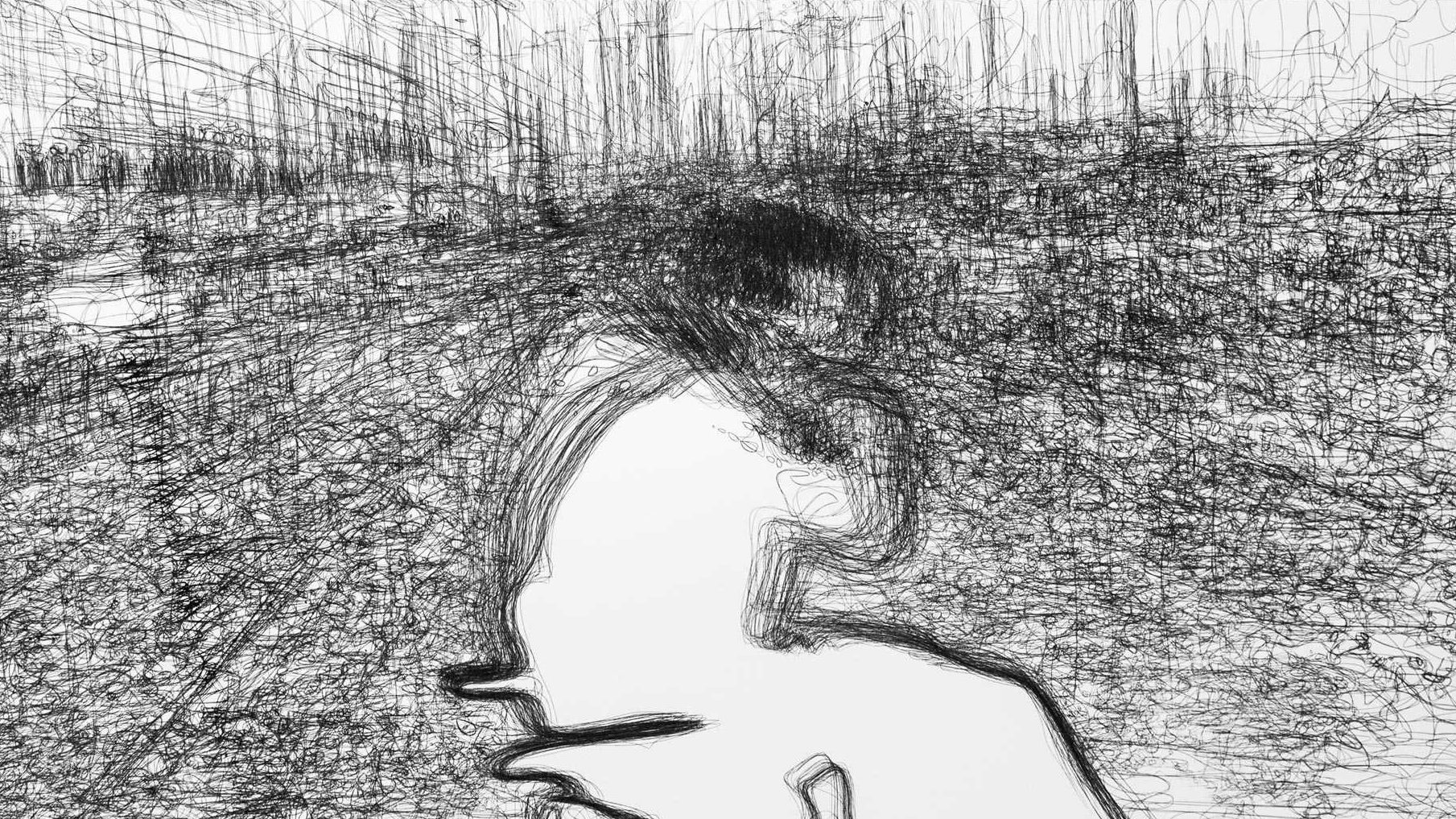
Titles
The titles of the works are generated using several techniques related to a digital “exquisite corpse”. Alternatively the following methods are applied:
– After choosing a word related to the drawn image “the predictive intelligence” of my phone proposes to complete the sentence. In the aggregate of proposed words sometimes a sentence arises.
– Subtitles are generated automatically on videos by voice recognition. These subtitles are transformed into text that an algorithm shuffles word by word. These associations can sometimes be poetic, funny or very evocative.
The texts, mostly in French, are translated into English thanks to an application that relies on artificial intelligence, which adds a layer of randomness to the proposed sentences
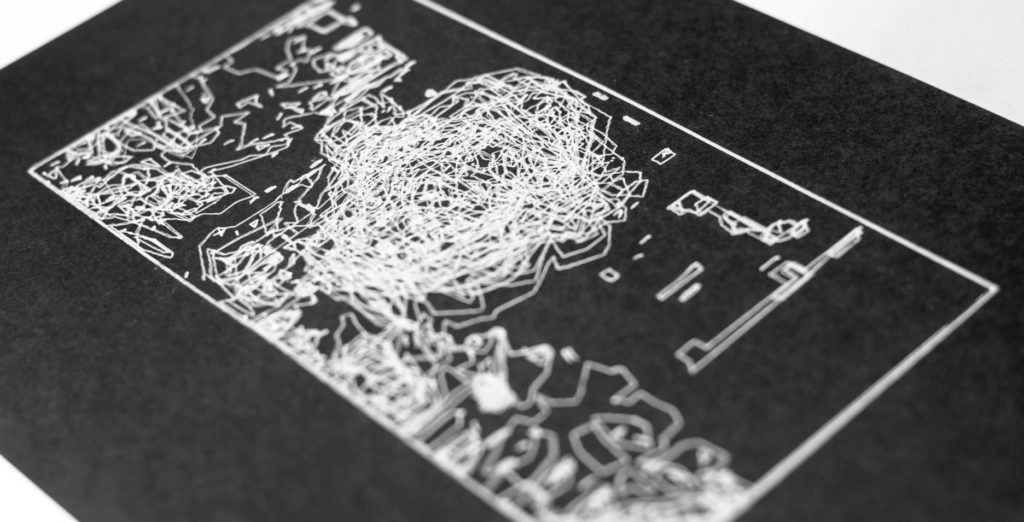
What's Next ?
If this combination of machine and outsider art proves successful, I would like to take this concept a step further. For the time being I take part in 4 steps: in the choice of the starting video, the choice of the image to be printed, the choice of the support and the choice of the title. The next step would be to make the project totally autonomous based on artificial intelligence (AI). The AI will learn to make these choices for me and will eventually become a virtual double.
NFT And Social Networks
The ultimate step aiming at doing without the artist has become possible thanks to NFT (Non Fangible Token). Let me explain. The NFT is based on the blockchain technology to offer digital versions of objects or works of art. It guarantees in particular the origin of the work, its provenance, its uniqueness (if there is only one copy) or its numbering if there are multiple copies, something that was difficult if not impossible to do until recently for digital works. In my approach, NFT would allow me to be totally dispensed with by proposing directly online the works produced by the AI. In the same way, “making-of” images could be automaticaly chosen to feed social networks.
